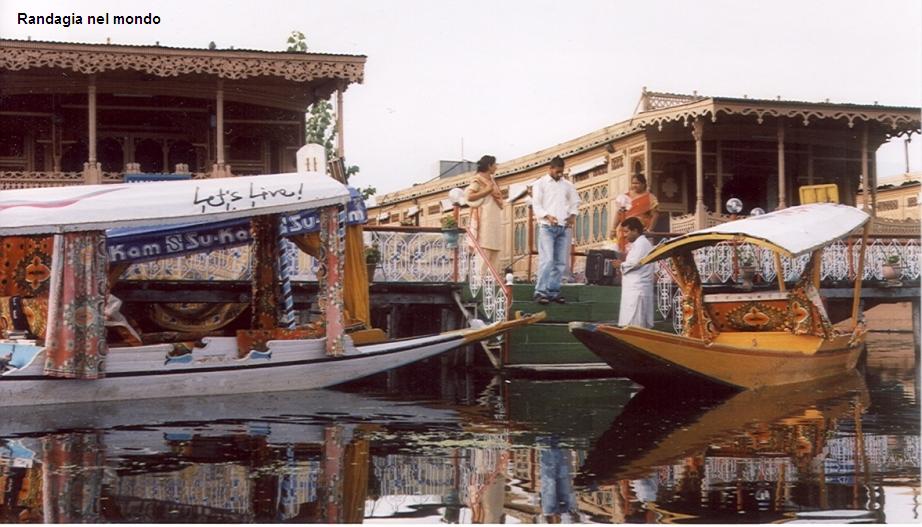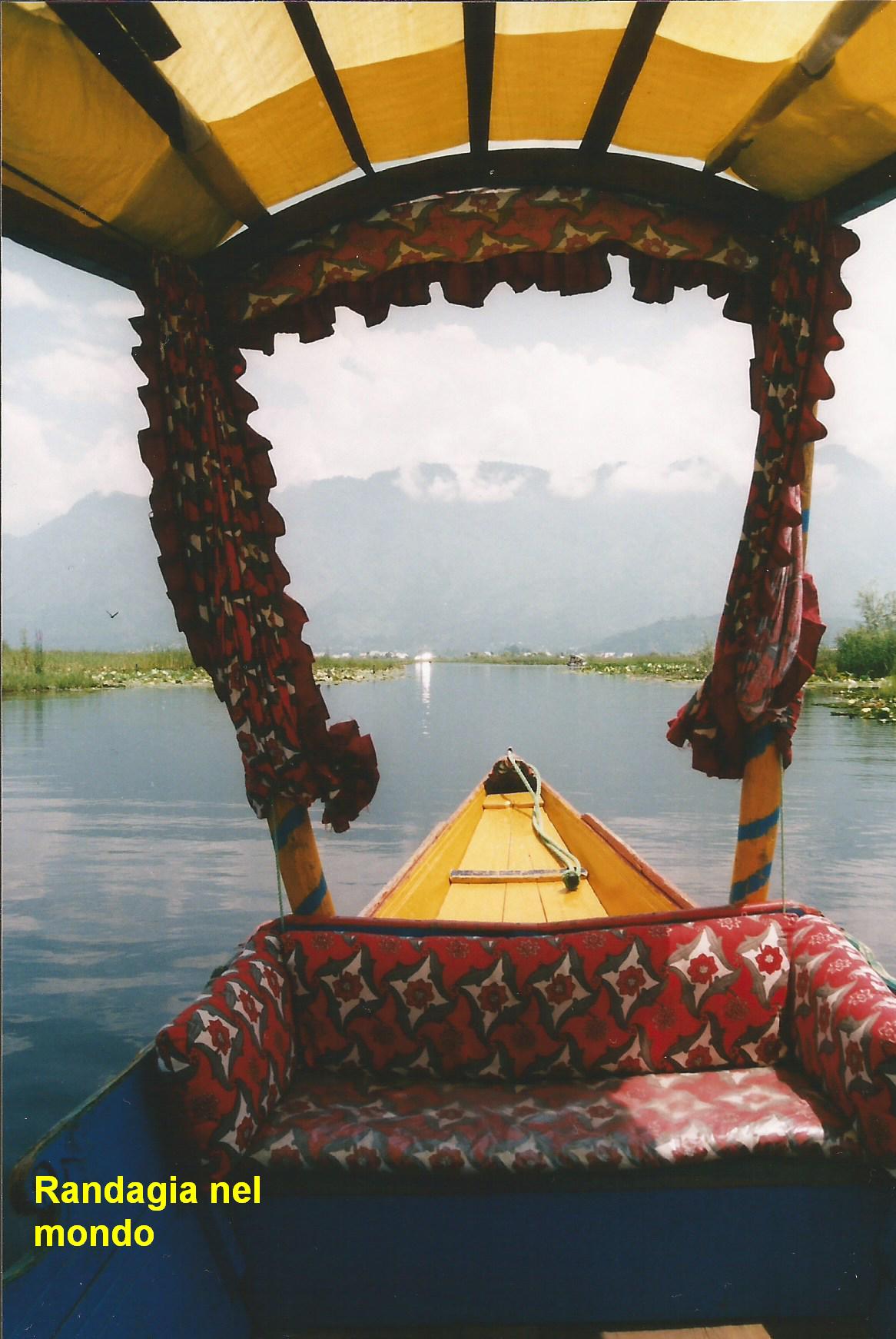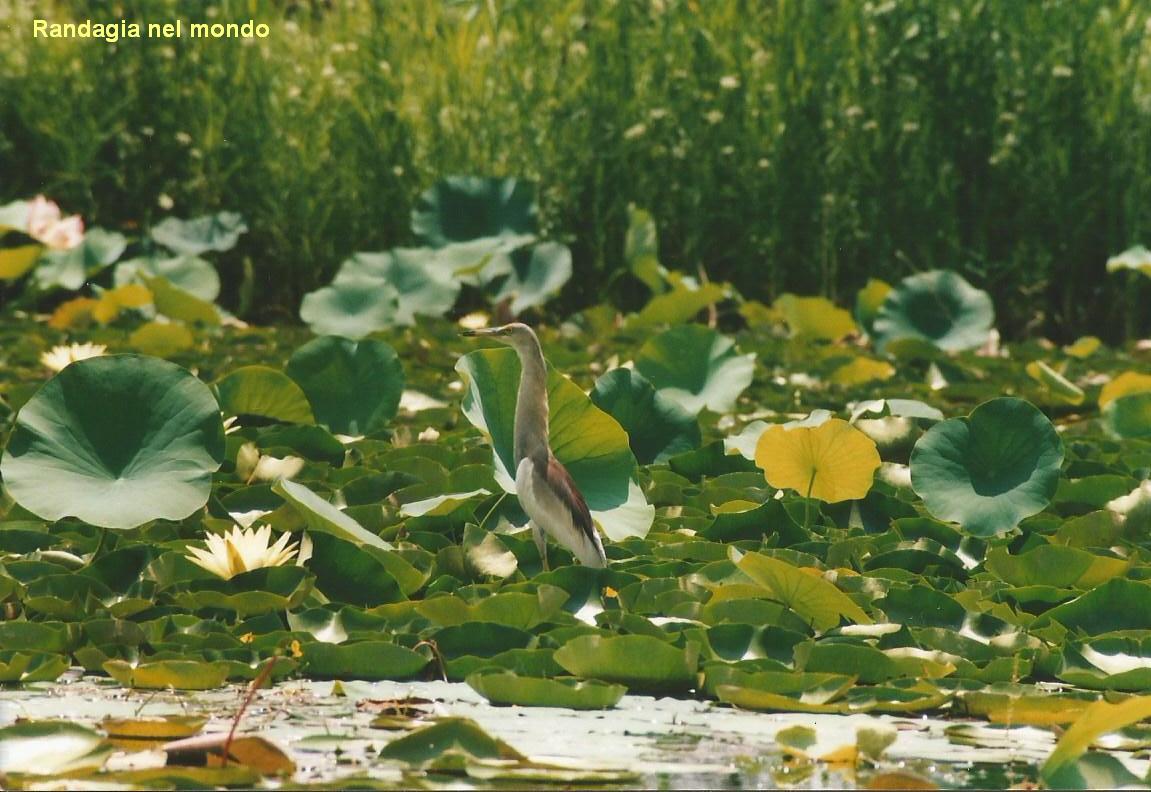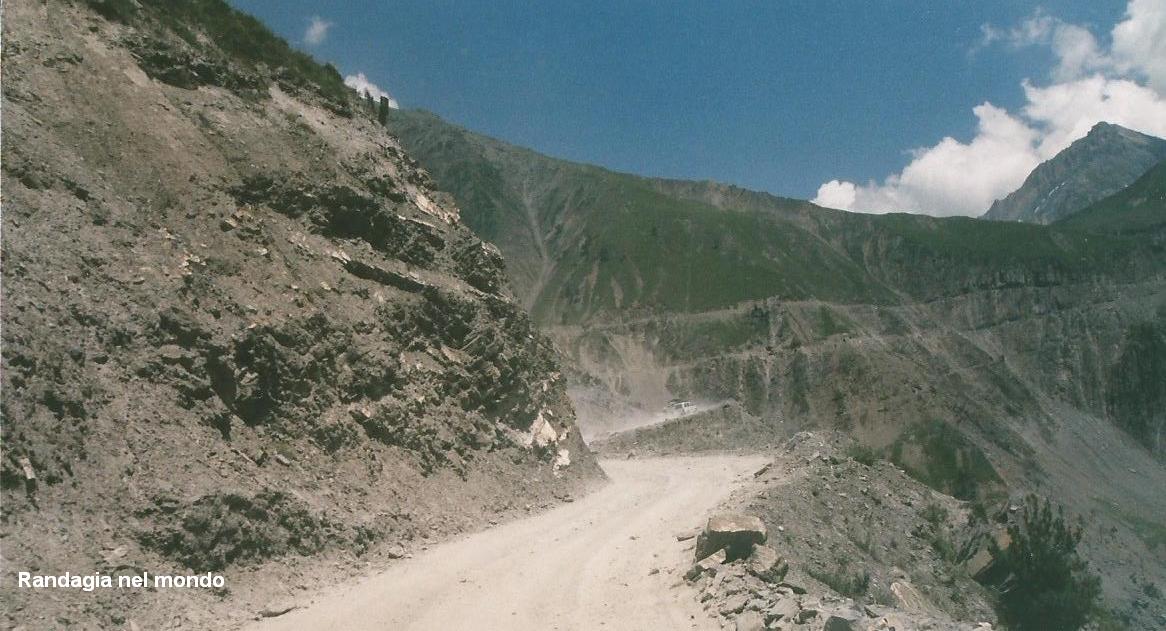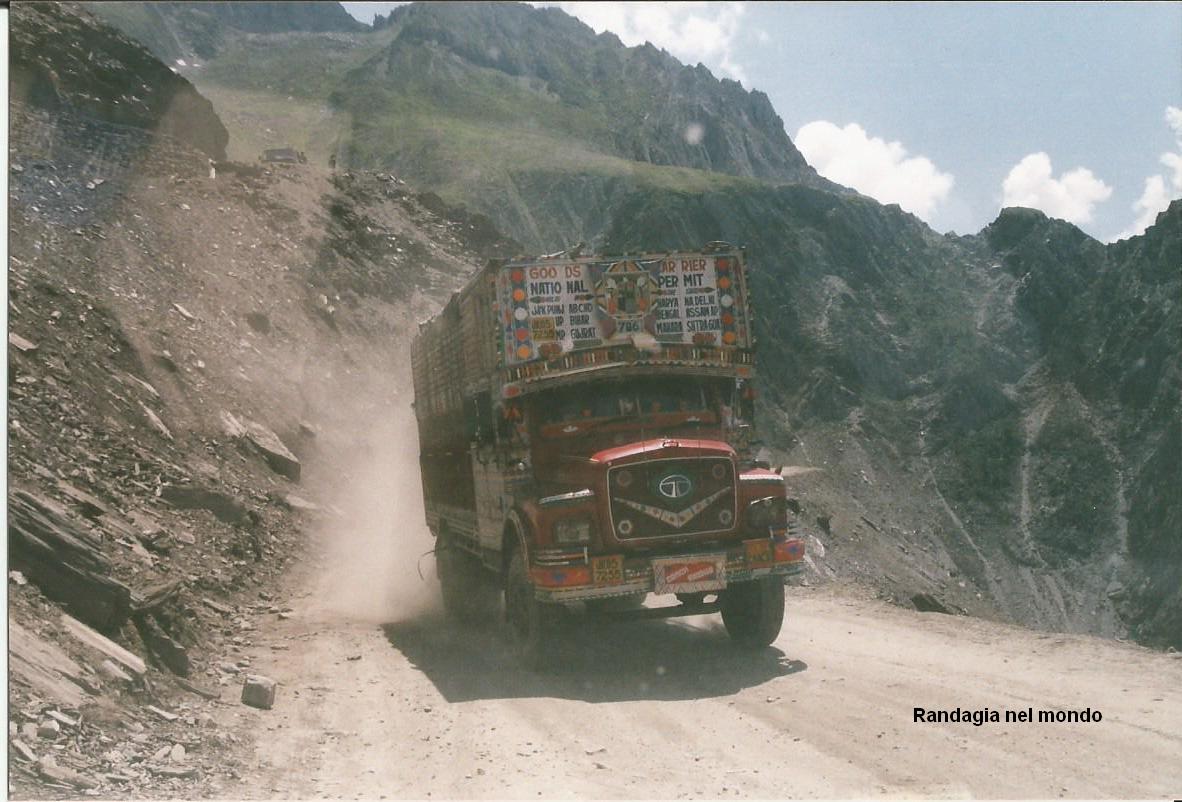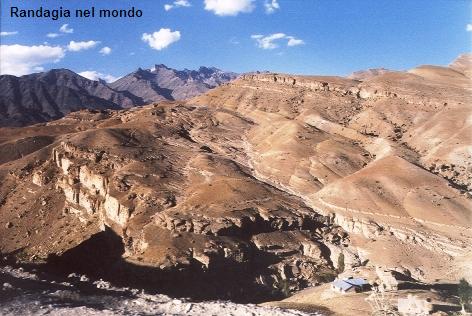SRINAGAR
If I had thought that the Delhi airport was shocking, I could not find an adjective to describe the one where I land, I would say “panic”; there is no conveyor belt, the bags are pell-mell thrown on a concrete basement, and everybody rushes on like locusts. Those who have never been to India must learn quickly that here the concept of personal space does not exist. If you and another Indian were the only human beings in a hundred million hectares park with benches, you can be sure that this is one would lay his ass on the same one you choose, and in addition 2 millimeters away from yours. And this is another reason why I preached, in the previous section, that in India you never feel alone … On the plane, new and in perfect condition (I am astonished) I meet two Dutch ladies, on a business trip. They are surprised I have nothing booked, and lead me to a place they know. I spend so three very relaxing days on a floating houseboat on Dal Lake, among eagles, various birds, lotus flowers, an unequaled ambience
Staying on the lake is one thing, even if you are a victim of the shikara drivers mafia, living in the city is another one, it’s the same as the airport, the traffic is terrible, dangerous and untidy. The wooden houses in the old area, overlooking the canals, are rotten, and should be refurbished. Srinagar is the Venice of India, in fact, when the situation was a bit quieter, Indians came here on honeymoon
Small detail, my parents do not know I am in Kashmir, I did not want them to worry. But since I’m not a liar, I honestly stated that the first 3 days of my Indian holiday would have been in a place called Srinagar, sure that they would not have bothered to investigate that much.
My houseboat is called Mashal, the halfboard price is 1400 rupees, a fortune, but this is how it works in Srinagar .. I think it would be a torture to stay in one of the hotels overlooking the Boulevard, the messy and panoramic road along the lake.
Tourists obviously prefer house boats, where meals, cooked by the landlord, are immensely better than those offered by the restaurants, which are therefore empty. But of course I can’t imagine this on the first night, so I dine alone in a depressing empty restaurant, in front of an arrogant waiter, and bad food
The remaining dinners, on the houseboat, however, are perfect, the first is a typical Kashmiri meal, made of mutton; the second a thali. Definitely, it’s better the latter, a little bit because it’s lighter, a little bit because even at home I do not eat much meat, a little bit because walking downtown I passed in front of a butcher shop …
A worthy of note drink is the Kashmiri tea, made with saffron and cardamom, good for the body and for the mind, ensures my landlord.
I spend a day just to sleep, to recover from the intercontinental journey, walking around town, getting information on how to reach Leh, tasting local specialties in the various stalls on Boulevard, and conversing with my hosts and their family
Jammu & Kashmir is only a name on a map, and, as it often happens, binds completely different realities. Kashmir has a typically Swiss alpine landscape, in Ladakh it seems to be on the moon. Kashmir is Shiite Muslim, Ladakh Buddhist, Jammu Hindu. In Kashmir the various ethnic groups have somatic features like Afghans, Central Asians, Kurds, in Ladakh are mostly Tibetans.
Men have fascinating faces, trimmed beards, white teeth, amber skin and beautiful eyes, with unlikely shades ranging from turquoise to emerald green to the color of tea. I can’t fix them that much, when I talk to them because it is a misconduct, according to local custom.
The few women I see have the burqa or the niqab (the black veil that leaves only the eyes uncovered).
The aversion against the army stationed in the region is evident, and same is for Hindus in general, considered a nation of bureaucrats and corrupt parasites, boisterous and good-at-nothing.
The soldiers, indeed, are scattered everywhere, every 10 meters on the boulevard. I am at least impressed, they are stiffly and blazing machine guns, but, apart scrounging a few cigarettes, none of them seems to care about the very few foreigners around, who instead are literally assaulted by all types of vendors and touts.
For the second day however I organize a shikara ride (1500 rupees) to discover the beauties of Srinagar: first the botanical gardens, Shalimar Bagh, where I get bombarded by hundreds of flashes of locals’ cameras, then other panoramic views of the Dal and Nagil Lakes , then the old town, a bit seedy, as already mentioned
To get to Leh there are two options. A public bus, which takes two days, stopping in Kargil, and shared taxis that depart early in the morning and takes about 14 hours and up, depending on weather conditions. No need to book, just turn up at the station, they leave when full. The cost is 1200 rupees.
Before leaving, when planning the rough itinerary, I questioned whether it was better to reach Leh from Manali, visiting first the Himachal Pradesh or from Srinagar. I attended several forums on the subject. so I decided to avoid to pass through Manali because the road is much higher, Taglang La pass is 5359 meters, whereas from Srinagar, Fotu La which is “only” 4108 m. Also, from Kashmir, the bus stop for the night is in Kargil, which is a real town at 3600 meters, with lots of guesthouses and dhabas, while those from Himachal stop at Sarchu, 4100 mt, where there is nothing, if not some tents, checkpoints, and empty cans of gasoline.
At 7.30, August 2, here I am sitting in the front seat of a jeep, along with other passengers, indigenous, plus another French tourist who will stop at Lamayuru
The journey is spectacular. The mountainous Kashmir area is very similar to the Italian or Swiss Alps, crisp air, green meadows, full of fir trees, and rushing streams. Some workers, with wooden beams, are building small temporary bridges to cross the streams. The most elementary safety rules are optional. We stop a couple of hours at Sonamarg, because of a protest march; demonstrators, screaming like crazy, set fire to tires in the street, and, armed with sticks, prevent the passage to anyone. We sit down on the grass under some trees and wait. Only problem is that transit of Zoji La is an alternate one-way only, and if we cannot reach it by a certain time in the afternoon, I think 13.00, then the road will be blocked.
The Zoji La, at 3528 meters, marks the natural border with Ladakh; the road, winding, narrow, mostly unpaved and without any protection is scary (actually I read that the pass is closed one day a week for maintenance)
especially when you are trying to overtake the colorful trucks carrying goods throughout all the subcontinent
The pass is a real watershed, after having crossed it the landscape changes abruptly, becoming more and more desolate, the different morphological characteristics of layered terrain give the rocks a thousand shades of colors, from ocher to purple, to grey. What is flowing in front of my eyes on this bumpy road is amazing. I have a persistent headache, I do not know it is due to weariness, or altitude.
The journey continues in silence. At 14.00, the lunch stop is made at Drass in a dhaba where the French guy does not dare to enter. Surely, it does not win the Oscar for cleanliness. But the food is good, and above all it will be the cheapest of the whole holiday, 12 rupees. This is because I send one of my fellow passengers to order and pay for me. After lunch, the atmosphere is more relaxed in the car, and the French guy and I are bombarded with questions, for him the ones about Materazzi and Zidane, for me the most embarrassing, such as how much is my salary, how much I pay for rent, etc. etc .. then we pass to politics, so much passioned talk, all summed up in the sentence “Kashmir is Kashmir, it is not India and it is not Pakistan”.
About Pakistan, the magnificent road we are now along, at 20 km from the border, is a disputed territory between the two states and seat of war in 1999. On the side we can see disturbing signs like “forbidden to take pictures, forbidden espionage” etc. etc..
Even willing it,it would be impossible to photograph, because the path is still fairly uneven, and the jeep proceeds in fits and starts. Frequent checkpoints. Foreigners must come down and register. One thing that impresses me are poor wretches, very black faced, a little because of the bitumen, a little because of the sun, who work for road maintenance companies, which, given the weather adversity, need constant care . They are immigrants of the poorest regions, such as Bihar, Uttar Pradesh, and even Nepal. Covered with filthy rags, living in dire conditions in camps built with garbage bags and other recycled towels, near the road, with their families. They split stones, carrying enormous burdens on their poor little bent legs. They pay them 50 rupees a day. If they get paid.. Their eyes are immense, their faces carved. Their effort and fatigue that I perceive will be one of the strongest feelings I will carry home.
The landscape continues to be lackluster and barren, yet charming.
The valleys are green and covered with apricot trees, small and sweet. They thrive in all the territory. We reach Kargil at around 17.00 and we stop for a while. The warm sunlight of the late afternoon creates extraordinary color contrasts and shadows between the mountains and the deep blue sky.
At Mulbekh, the first real Ladakh outpost, there is an ongoing festival, announced at a distance by the sounds of horns and trumpets. We cross the village among cheering crowds along the way. I see some women wearing the typical cobra shaped headdress, adorned with precious stones, the perak. I remain stunned to observe one lady who suddenly appears in front of my window, I stare at her earrings, she stares at mine. I have the feeling that her gaze is literally scanning me. The curiosity is evidently the same! All this of course takes place in the fraction of seconds.
The crossing of the Fotu La, just before Lamayuru, is quite traumatic. We stop for a pee. Aside from headache, I make a really huge effort to regain my place in the jeep.
When it gets dark we are all already cronies, they make me sing typically Italian songs, and then teach me typical Kashmiri ones.
We are at Lamayuru at around 21:30, and arrive in Leh at 1.00 nearly. During the trip, one of the passengers books me a room in his same guesthouse


